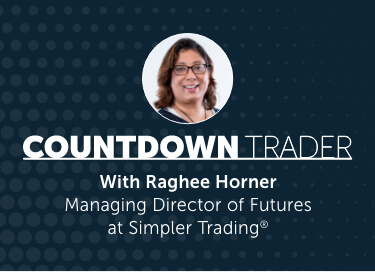The Guide to Naked Options
If I had a penny for every time I’m asked, “Do we trade naked options?” This is a frequent question, the topic can be confusing and therefore intimidating but the answer is “Yes”. Any time we do not own the underlying asset, the stock, ETF, or etc. the option is naked.
However, the distinction that needs to be understood is buying versus selling. I’ll buy naked calls and puts but I won’t sell or write naked calls and puts. Of course, there’s always room for an exception but for purposes of our conversation today, we’ll stay with only buying calls and puts.
I’ll explain below…
What’s A Naked Option?
In order to really understand what a naked option is, we need to start at the beginning of what an option actually is.
An option is a contract that gives you, the buyer, the option to buy or sell an underlying asset. An option is exactly that, you have the “right” but NOT the “obligation” to buy or sell something. Think of a stock or ETF at a specific price on or before a specific date.
What you’re doing when you buy an option is paramount to saying, “Yeah, I may be interested in buying a long call option of Apple at $145.00.” Remember, you’ve acquired the right, not the obligation to buy Apple at $145.00 — the underlying asset. If you don’t want to exercise that “right” to buy that stock, you exit that contract. Meaning you sell (liquidate) that long position before the expiration date.
As traders, we’re trying to take advantage of the movement, but you’re not obligated to do anything. In the case of a long call, we just want to see the value of this option that we have bought go up and be worth more than what we originally bought the option for.
Countdown Fun Fact: What we’ve just talked about regarding buying a LONG call also applies to a LONG put.
Looking At Long Puts:
In a LONG put, you have the “right” not the “obligation” to sell an underlying asset (such as stocks, ETFs, etc.). In this case, we want to take advantage of the movement to the downside. You want to be a seller from a price that you’ve determined is going to allow you to be profitable.
Notice the words BUYS and LONG. If you’re long a call the key here is about being the buyer. Remember, you have the “right” but not the “obligation” to do something. (What I’ve said here also applies if you’re long a put.)
So, if we know that a call is that instrument you’ll use to take advantage of the movement higher, and a put is an instrument you’ll use to take advantage of the movement lower as a buyer…
Then What’s The Big Deal About Naked Calls?
It’s not the naked call that creates the anxiety but rather understanding buying versus selling (also referred to as “writing”, “shorting”, “collecting premium”) and risk.
With buying versus selling, when we buy an option we “long” the call or put. When we sell an option we’re looking to collect premium on the “short” call or put.
What about the risk?
When you buy a long call or put, whatever you have paid, the dollar amount you spent to buy that option is your risk. The option can go to zero but it can’t drop below zero. Your risk is whatever the dollar amount you’ve paid then tack on fees and commissions.
Example: Apple:
For example, let’s use Apple again. Let’s say, I bought March calls and I spent $800 today, buy a call, that means $800 is my risk. That’s simple, as long as you’ve bought it.
What happens to your risk if you’re no longer buying, but rather, selling an option. What’s your risk? Whatever you paid for is the first part of your risk but the potential problem arises when you have sold naked options.
You think the market’s going to go lower. You’ve sold the options, the put that would allow someone else to take advantage of that idea. That means you, the seller of the put, sold it short. If the price of Apple were to then head lower, you’re now obligated to buy the shares at the strike price potentially, right? Meaning you’re potentially obligated, but that’s if you let it go to expiration. However, you could sell that put back. But if you’ve sold a put and collected that $800 again (from the example above), you sold a put for $800.
You’ve collected that money, it’s now in your account.
As Apple heads lower, the person who bought that put from you (that put you sold) it’s now more valuable. Who knows how much more, but it’s going to be more valuable than the $800 you collected. So now you’re losing money because you only collected $800. The value of that put is now $1,800 which means you’ve lost $1,000.00.
You’re selling a naked put initially believing the stock is headed lower but it doesn’t. You could be obligated to buy the shares but you’re also susceptible to the losses between what you’ve collected as credit and now the value of this more valuable put option. When you don’t have any safety net (a.k.a. when you don’t own the underlying asset) any kind of option to offset the risk of the put you’ve sold in the same thing, your risk is very different.
People say your risk is unlimited or your reward is unlimited but that’s really incorrect.
Technically, it’s undefined. I don’t like to use the word unlimited because truthfully it’s undefined. Think about when you’re long a call or long a put, the risk is defined from what you paid for the option. When you’re selling short, the risk of your call or put is undefined. Yes, it feels good to collect credit but things can go against you very quickly.
If you’re selling a naked call, it can just keep rallying.
In that regard, technically it’s unlimited risk because theoretically price can keep going up forever (not that it does) but it could. There’s really no ceiling. However, there’s a floor for a put because technically all that a market can do is go to zero.
That’s the idea when you’re selling naked options, you’re vulnerable… that’s just the bottom line.
You still want to sell options? You can. Stay tuned for next week when we talk about covering yourself in the world of “uncovered”/naked options.



